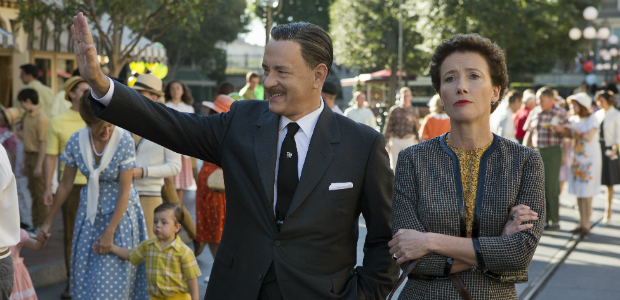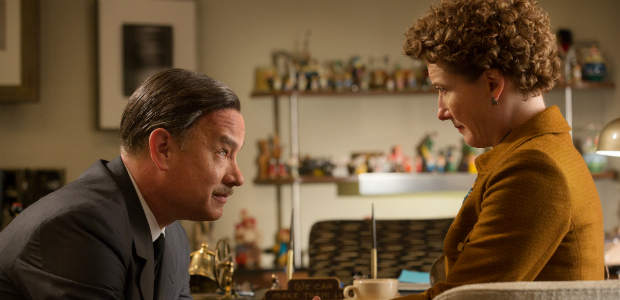
The creator of Mary Poppins: Once a mystery, now glimpsed through many lenses
The biographer of P L Travers compares the real woman with the representation

When biographies are published, authors are usually done and dusted with their subjects’ life. Not so for me. No matter how much I think our relationship has been laid to rest, Pamela Travers always comes back, just like her doppelganger and creation, Mary Poppins.
After my biography of the author was published in Australia in 1999, it became the basis for a documentary on Travers’ life in 2002, then came the Mary Poppins’ stage musical of 2004, another documentary, The Real Mary Poppins, released in the UK the same year, the republication of my book in the UK in 2005, in the USA in 2006 and in Australia in 2010. And now, Travers has returned once more in Saving Mr Banks, the story of Travers’ relationship with Walt Disney, one that Travers called “uneasy wedlock”.
With each reincarnation, the story of Travers’ life is reinterpreted, with all the attendant surprise that Travers was an Australian – amazing, who new?! – and publicity focusing on how the filmmaker, documentary producer, stage or screen producers have discovered her “secret” life and the “true story” of the “real Mary Poppins”.
In Saving Mr Banks Emma Thompson, in the role of Travers, spars with Walt Disney (Tom Hanks) in Hollywood as he and his lieutenants prepare the screenplay and score for an adaptation of Travers’ Poppins books. An extensive chapter in my biography, Mary Poppins, She Wrote, the Life of P L Travers, documents those days during which the conversations on the author, the screenwriters and the songwriters, the Sherman brothers, were recorded for posterity on audiotapes. Copies of those tapes are in the State Library of New South Wales, Sydney, along with a large collection of Travers’ personal papers, diaries, albums and family photographs.
The premise of Saving Mr Banks is that Travers was lured to Disney headquarters in Hollywood in 1961 so that Disney could work his magic in convincing her to sell her rights to the Poppins’ stories. When she agrees, all their differences are buried.
Well, no. That’s not what really happened. In 1959, Travers’ lawyer, Lord Goodman, of Goodman Derrick, London, convinced her that Disney’s offer that year of £100,000 and five per cent of the producers’ gross was too good to reject. Travers agreed, writing to a friend that it was such a generous contract that “it would not be right to refuse”, despite her belief that “Disney was completely without subtlety and emasculated any creature he touched, replacing truth with false sentimentality”.
On 3 June 1960 she signed a “service agreement” with Disney handing over the rights to her stories for a period that was initially to last for six years. Her 10 days in Hollywood in 1961 were just the beginning of their business relationship.
Walt Disney always had the upper hand, convincing her to sign further agreements in 1961 for a long list of merchandising tie-ins to the movie. They included 46 Mary Poppins’ products marketed by Disney, among them girls’ dresses, dolls, jewellery and books titled Walt Disney’s Mary Poppins. The Disney books outsold Travers’ own Poppins’ books by 5:1. The National Sugar Company jumped on the bandwagon launching a Spoonful of Sugar advertising campaign, while a British company launched Mary Poppins Nylons.
When Walt Disney’s Mary Poppins was released in 1964, Disney overlooked Travers entirely, failing to invite her to the movie premiere in Hollywood, but she went anyway and posed with him and Julie Andrews for a photo.
At first, Travers was very reluctant to criticise the movie as there were plans for a sequel. She told friends she did not want to be seen as “a prickly porcupine” and explained that Disney once turned on her for making a disparaging remark about the movie, saying that he had “given her bread and butter” so why would she speak against the film? But soon after the premiere, Travers told her close friends that she thought Disney “wanted her dead” because all his other authors were “dead and out of copyright”.
There was to be no sequel and Disney died at the end of 1965.
Gradually, and timidly at first, Travers wrote of her objections to the movie. She was irritated to see the words Walt Disney’s Mary Poppins on billboards believing the credit should have been P L Travers’ Mary Poppins screened by Walt Disney. The film was merely “a colourful extravaganza, as far from true magic as it was possible to be.”
She hated the animated pig and horse and was shocked that the screen Mary Poppins lifted up her skirts and showed her underwear when she danced. By 1967, Travers inflated the movie’s impact on her as an emotional shock that left her deeply disturbed as it was “so oversimplified, so generalised” and by 1968 she “couldn’t bear the movie.”
Yet the film helped boost the sale of her books and reinvigorated her life. After the movie, Travers was not only richer, but also a woman worth some modicum of fame as the creator of the magical nanny.

Soon after the premiere, Travers told her close friends that she thought Disney “wanted her dead” because all his other authors were “dead and out of copyright”.
Journalists pursued her, and later, women’s colleges in the US invited her on campus to become a writer in residence. That sliver of fame last a decade but, by the 1980s, Travers was no longer a marketable commodity although she remained a pivotal figure in the international community that honoured the life and teaching of one of her gurus, the Russian mystic, George Gurdjieff.
She died in 1996.
The following year, I began to research her life starting at her birthplace, the town of Maryborough, Queensland. The locals knew nothing of her. The town library had just two references to her family in archived newspapers.
On to the small Queensland town of Allora, around 400 kilometres south. Same. No one had heard of her but eventually I found the house in which she lived with her family and where her father died in 1907.
Onwards again to the charming town of Bowral in New South Wales, where Travers, her sisters and widowed mother moved under the patronage of the girls’ great aunt, Helen Morehead.
No one knew of her there either.
Next to the Mitchell reading room of the State Library of New South Wales that had bought her personal papers in 1989. There the real research began, the letters, diaries, photos, audio tapes, newspaper and magazine cuttings all saved by her and sold on to the library by her son, Camillus, through the London antiquarian book company where he once worked, Bernard Quaritch Ltd.
My husband, our young daughters and myself went on a journey to Santa Fe, Taos, Washington DC, Dublin, County Donegal and London to retrace her steps and then came the deep disappointment that no Australian publisher wanted to know about a woman who in the 1930s created the mythical Mary Poppins.
Penguin Australia’s then publisher, Bob Sessions told me that books about children’s authors never sold and in any case, no one would be interested in this woman. Months later, a freelance editor in Sydney, Alison Pressley, approached Hodder Headline and a contract was signed. Titled Out of the Sky She Came (a phrase from Mary Poppins), the book sold about 3000 copies and triggered a certain excitement in Maryborough where the locals discovered they had their own Mary to celebrate.
I was the first guest of honour at the inaugural Mary Poppins Day in 1999, where the locals dressed up as Bert, Mary, Admiral Boom and other characters, with the day including chalk drawing and pram pushing competitions. Subsequently, each Australian town or suburb where Travers had lived erected their own Mary Poppins sculptures, including Maryborough, Bowral and the Sydney suburb of Ashfield.
In 2000, a Sydney filmmaker, Ian Collie, picked up my biography in a bookshop and asked me if he could make a documentary on Travers’ life, based on book. The documentary was released in 2002 with the title The Shadow of Mary Poppins. By 2006 Collie was eager to produce a feature film on Travers, eventually partnering with Alison Owen’s Ruby Films and then together and much later, partnering with Walt Disney Pictures.
I haven’t yet seen the film but reviews reveal that a pivotal moment in the movie is when Walt Disney sits down to chat with Pamela Travers in her London home, charming her into seeing things his way. In fact the real charmer who visited Travers home in Shawfield Street, Chelsea, was the producer Cameron Mackintosh who in 1993 sweet-talked her into selling him the stage rights for Mary Poppins, the Musical, a huge success for Mackintosh all over the world.
I saw the musical at its preview season in Bristol and again in London, Melbourne and Sydney, and believe that the director, Richard Eyre and the writer, Julian Fellowes, understood the original intention of Travers, showing Mr Banks, Poppins’ employer, as a pivotal and empathetic character whose life was transformed by the nanny flying into his life. As in any book, musical or film, the depiction and understanding of a life is seen through very different lenses in the same way as the classic film, Rashomon, directed by Akira Kurosawa, shows its various characters depicting contradictory versions of one incident.
Each person who has retold Travers’ story has remade her, creating their own narrative, emphasising what they think are the most interesting aspects of her life and relationships and what might appeal the most to the paying public.
I’m pretty sure she wouldn’t recognise her real spirit in any of them, and although her late son, Camillus, liked my biography, and believed it was true to his mother, that would probably include my interpretation of this fascinating and still elusive woman.







COMMENTS